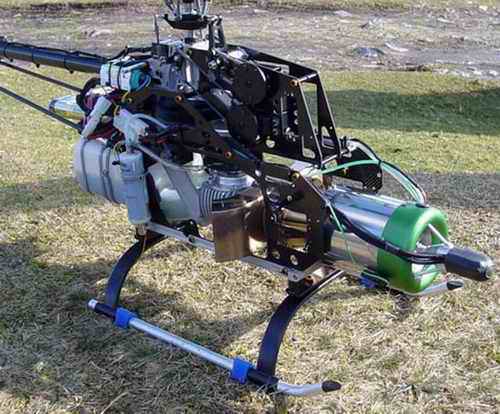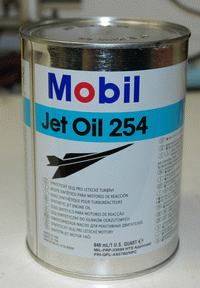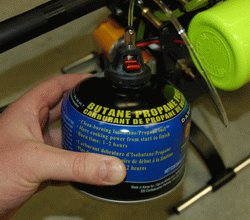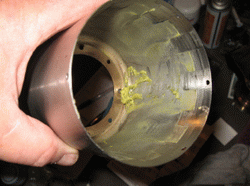Is A Turbine RC Helicopter Right For You?ATurbine RC helicopter is certainly a very realistic goal. Other than the complexities of the turbine engine(which really is not that complicated), if you are mechanically inclined and have mastered nitro or gas helis, a turbine RC heli is the next logical step. Speaking of cost, what about upkeep? Well considering the mechanics are pretty much the same as large gas and nitro helis, you can expect that same kind of mechanical component cost. Good quality turbine engines if properly cared for should run at least 50-70 hours between services – that is 300-420 ten minute flights – a lot of flying. Turbines spin at very high speeds – upwards of 160,000 RPM. They have two special bearings (one at the front and one at the rear) that look just like regular ball bearings but are made of ceramic to handle the very fast rotational speeds coupled with the high amounts of heat they are subjected to. These bearings will be your main service items on the engine throughout the years. The front bearing in the turbine is the one that takes most of the punishment and usually the first to go. Chris Bergen of Bergen RC told me you can actually "hear" when these bearings start to go as they wear and loosen. These bearings will generally cost around $100 USD each and as I said are really the only true wear and tear parts in the engine. So much has to do with how you treat your turbine engine, but RC helis are generally not running these little beasties at full power and this saves both bearings and fuel. For example, during a normal flight, my Wren MW-54 two stage heli engine is usually spinning not much more than 100,000 RPM, and I have my maximum RPM limit set to 130,000.  That said, even at lower power levels, turbines are still thirsty, generally consuming at least 100 ml of fuel per minute. They use regular kerosene or jet A1 fuel mixed with turbine jet oil. Even at that high consumption rate, fuel costs will be less than nitro fuel, a little more than gas however. That said, even at lower power levels, turbines are still thirsty, generally consuming at least 100 ml of fuel per minute. They use regular kerosene or jet A1 fuel mixed with turbine jet oil. Even at that high consumption rate, fuel costs will be less than nitro fuel, a little more than gas however. You also have to use small quantities of propane, butane, or a propane/isobutane mix (high performance camp fuel such as Coleman Powermax fuel for example) when starting the turbine (unless you have a "kerostart" system), but these costs are minimal. You also have to use small quantities of propane, butane, or a propane/isobutane mix (high performance camp fuel such as Coleman Powermax fuel for example) when starting the turbine (unless you have a "kerostart" system), but these costs are minimal.  Dry chemical extinguishers like those found at the local hardware store are not recommended since the dry chem WILL damage the turbine engine. The picture to the right shows what happens when a dry chem extinguisher is used. The dry powder is sucked into the engine, melts inside the combustion chamber, and will usually at a minimum wreck the turbine section of the engine. Dry chemical extinguishers like those found at the local hardware store are not recommended since the dry chem WILL damage the turbine engine. The picture to the right shows what happens when a dry chem extinguisher is used. The dry powder is sucked into the engine, melts inside the combustion chamber, and will usually at a minimum wreck the turbine section of the engine. There is one last point to consider when you are wondering if a turbine RC helicopter is for you. Perhaps you stumbled upon this site looking for RC turbine jet information or are thinking a turbine RC jet is a better choice. I fly planes too and admit the thought of a 1/6 scale turbine powered F-16 screaming through the air at 200+ kph is a powerful image - but I would be too scared to fly it. With a turbine RC helicopter, I can keep it as close to the ground as I want or fly nice and slow scale type helicopter flying while getting a full dose of turbine noise and smell. This goes right back to the point I made above about bad pilots. I know my flying skills are probably not good enough to fly a turbine jet, but I do know they are good enough to fly a turbine heli. You must also evaluate your own skill level (flying skills & technical skills) before deciding if you are ready for this next fun step. The only way I could personally justify having this much money tied up in a RC aircraft is in knowing that there's minimal chance it will crash or crash hard enough to be a complete write-off. Seeing that I don't intend doing any fancy aerobatics with my Intrepid turbine heli and have many enjoyable flights with it so far, that is a very realistic outlook in my opinion. Just remember however, crashing is part of this hobby, and you have to do a little sole searching within yourself knowing full well it is not a question of if it will crash, but rather when it will crash. Perhaps that fear is what will keep your turbine RC helicopter safe for many years to come.  This is not to say you can’t perform 3D aerobatics with certain turbine RC helicopters, but I know for a fact crashing is part of 3D – you can’t get away from it... sooner or later the ground always wins. On the other hand, if your skill and bank account allow it, you will impress people beyond measure as Chris demonstrates below flight testing his new Magnum 44Turbine RC Helicopter. This is not to say you can’t perform 3D aerobatics with certain turbine RC helicopters, but I know for a fact crashing is part of 3D – you can’t get away from it... sooner or later the ground always wins. On the other hand, if your skill and bank account allow it, you will impress people beyond measure as Chris demonstrates below flight testing his new Magnum 44Turbine RC Helicopter. |
Tuesday, 20 September 2011
Helicopter Right For You
Subscribe to:
Post Comments (Atom)
No comments:
Post a Comment